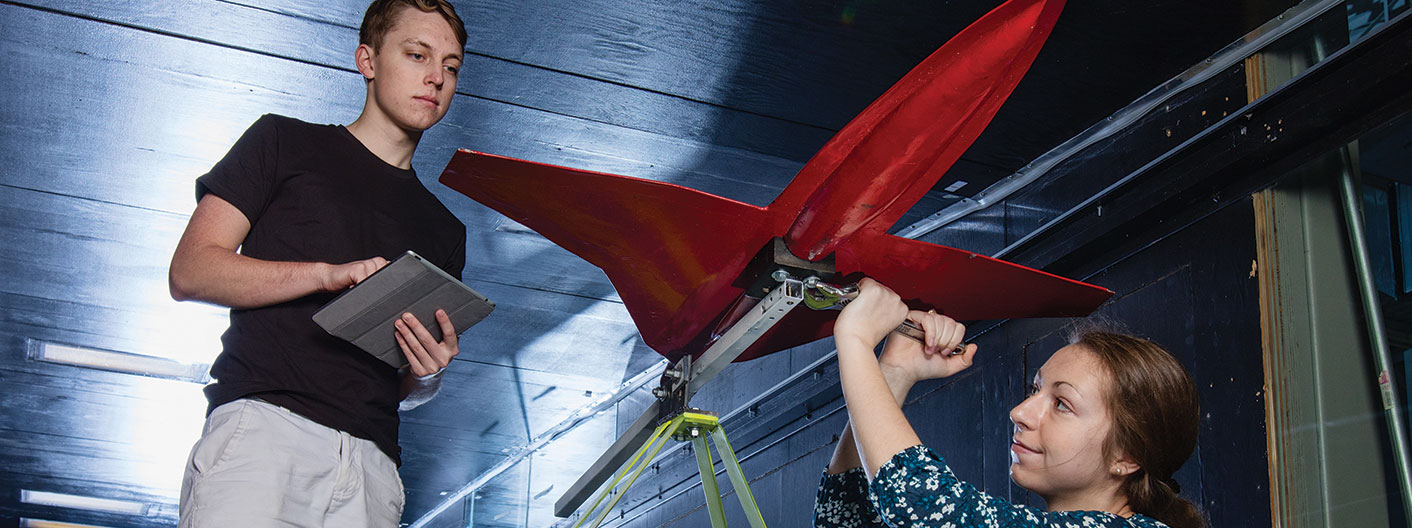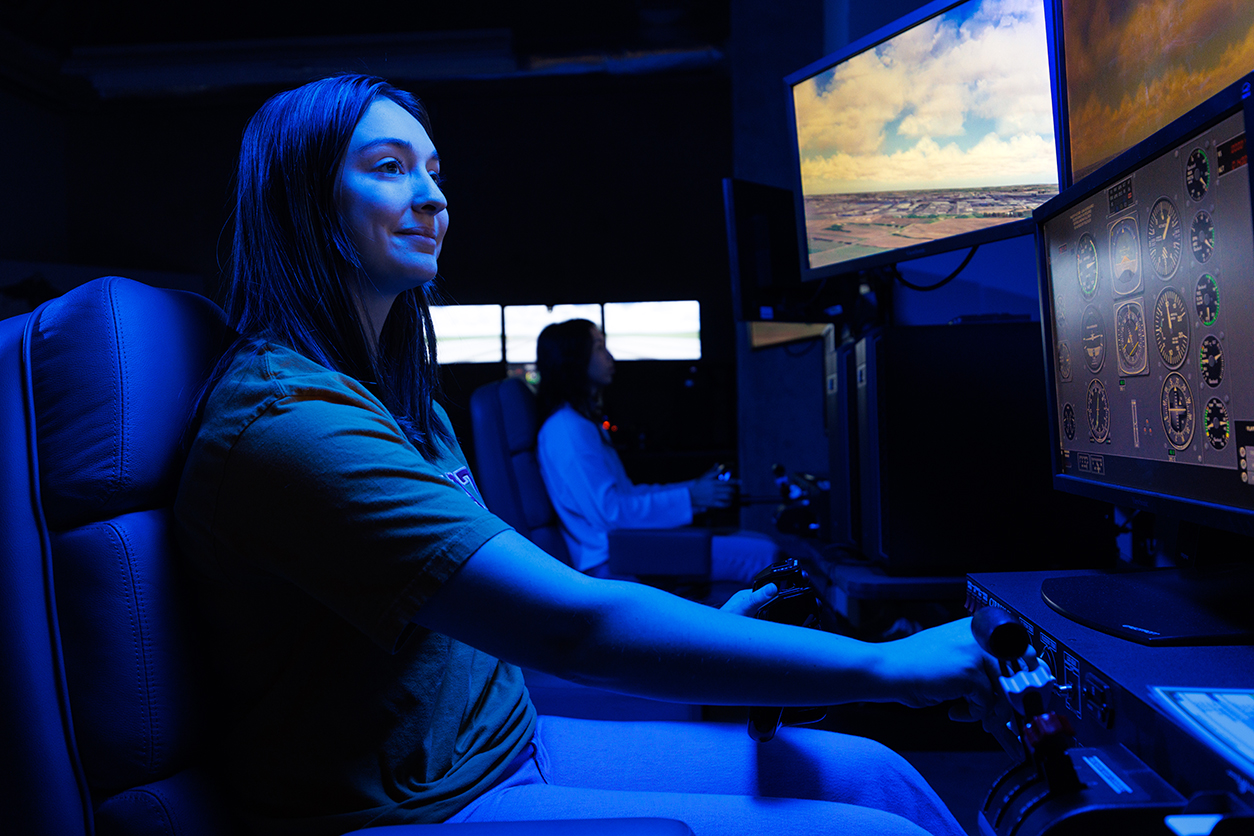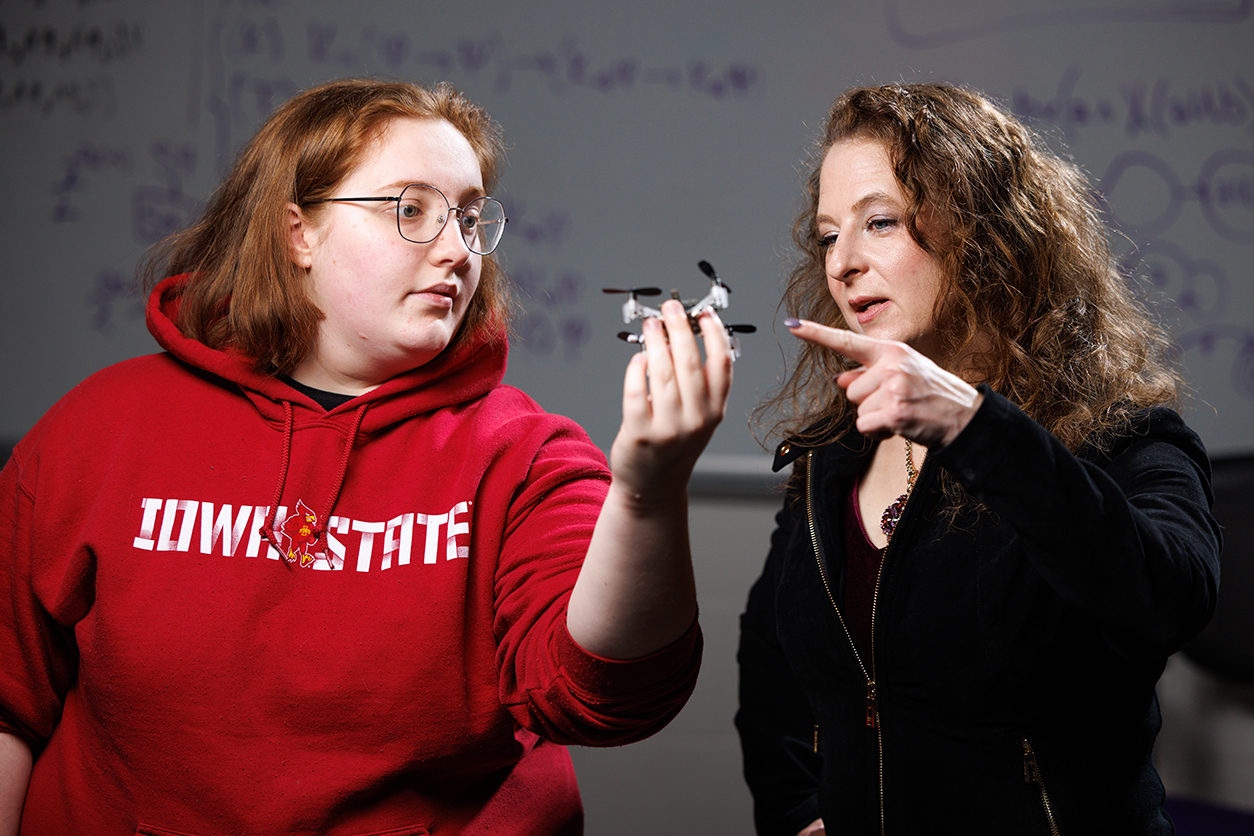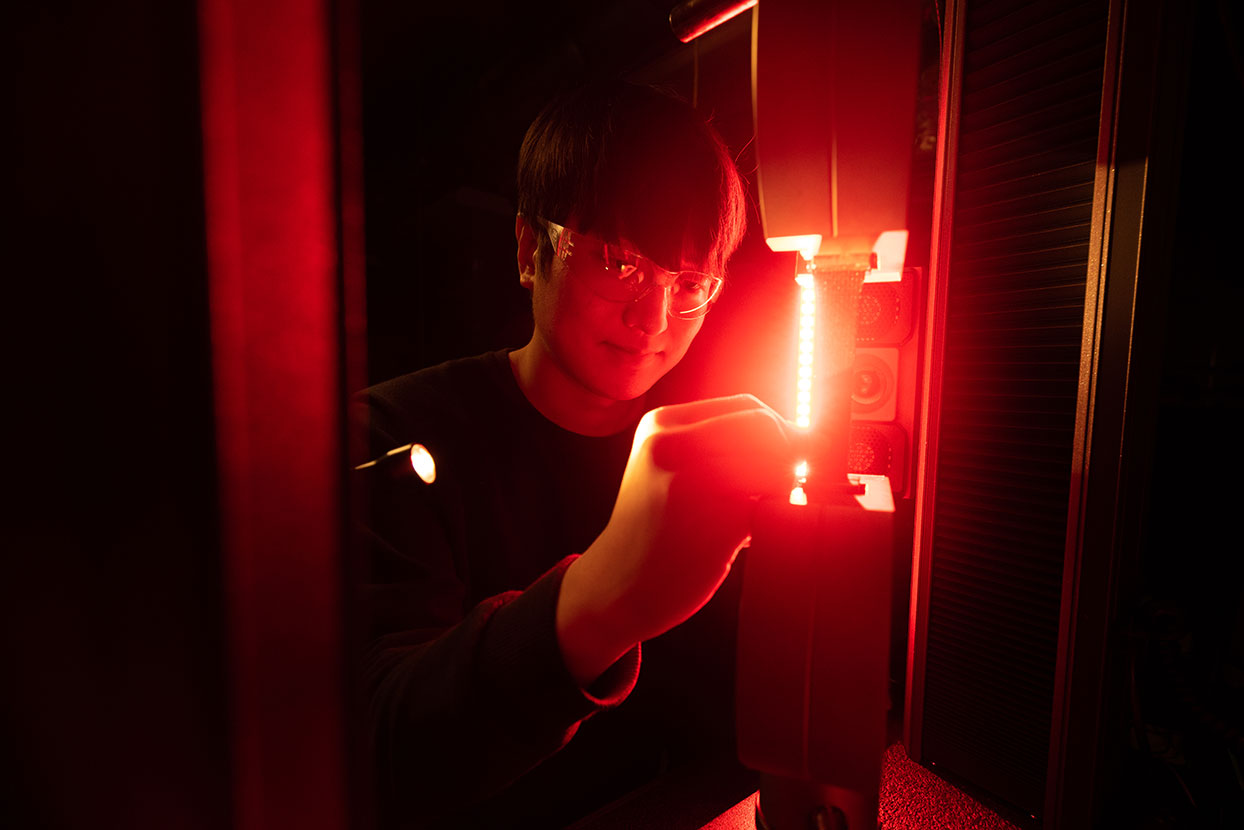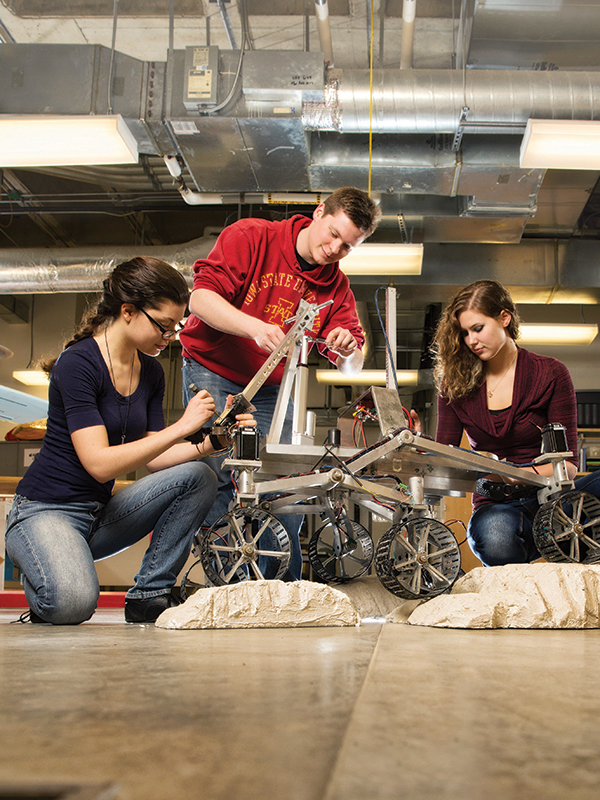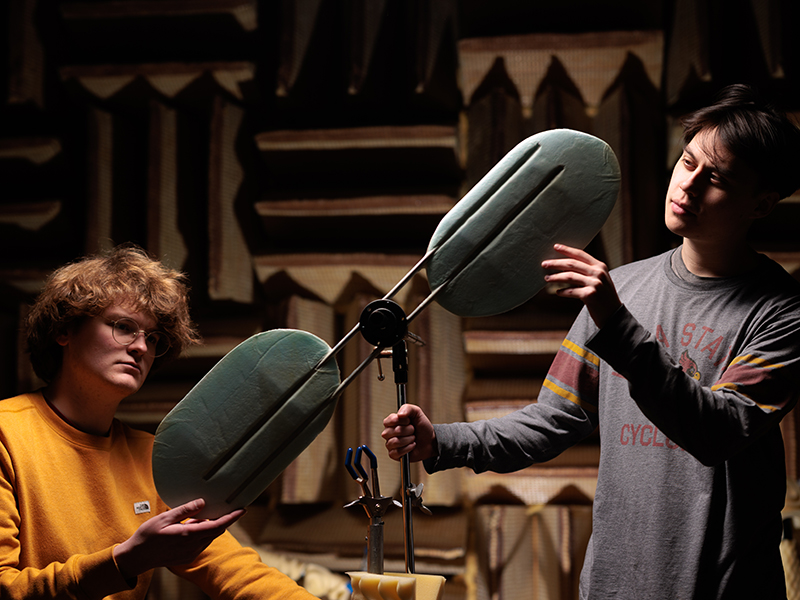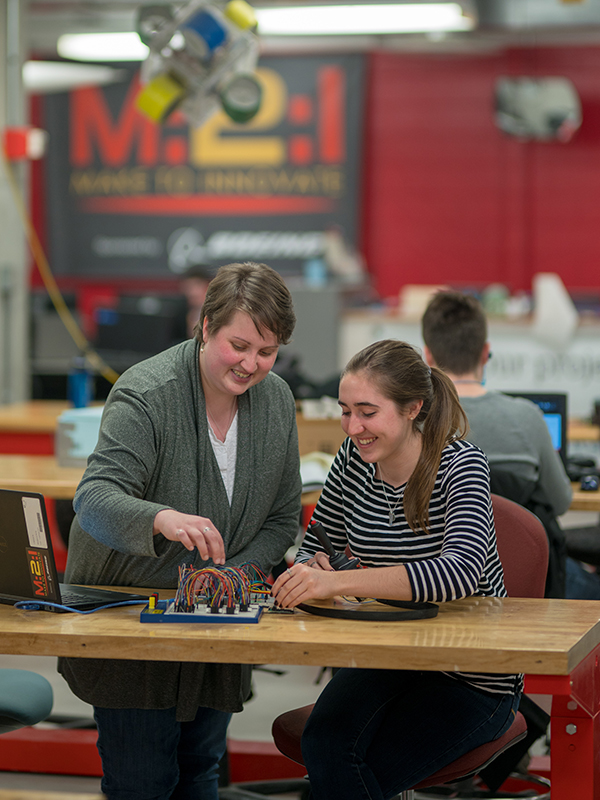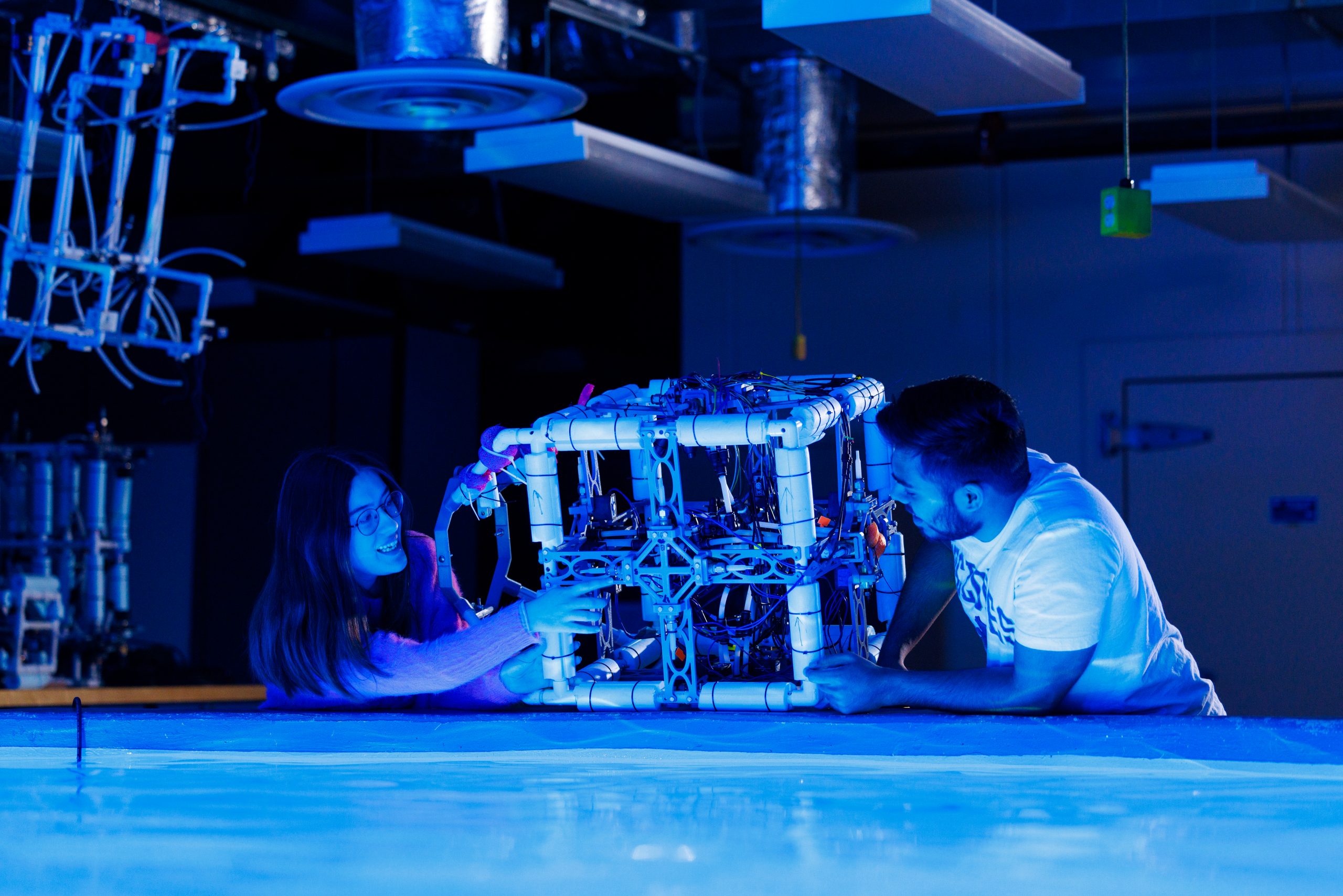Your Discovery In The Making
The aerospace curriculum is designed to provide you with an education in the fundamental principles of aerodynamics, flight dynamics, propulsion, structural mechanics, flight controls, design and systems. Our program is committed to
real-world preparation that includes a foundation in basic sciences, math and engineering; laboratories to build practical skills; hands-on experiences to understand the problems of tomorrow; and design challenges focused on aerospace industry needs.
Our faculty and students conduct cutting-edge research in nondestructive evaluation; complex systems; computational and experimental aerodynamics; astrodynamics; guidance, navigation and control; aircraft icing; composite structure; and micro/nano mechanics of materials.

